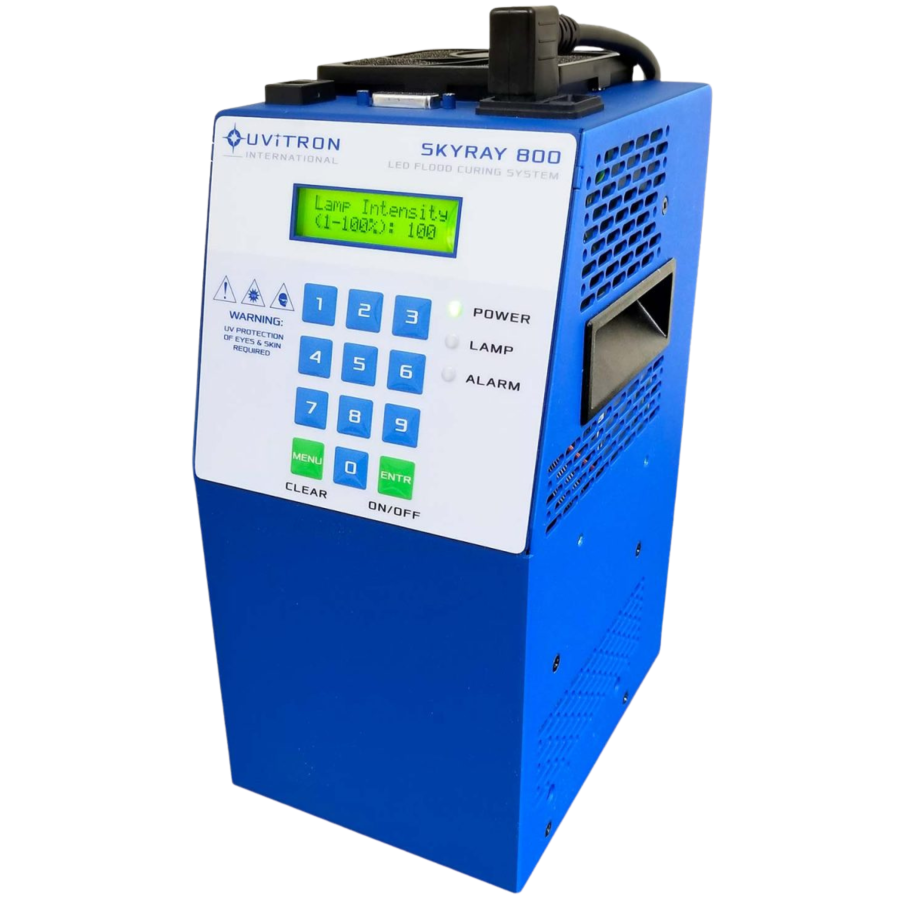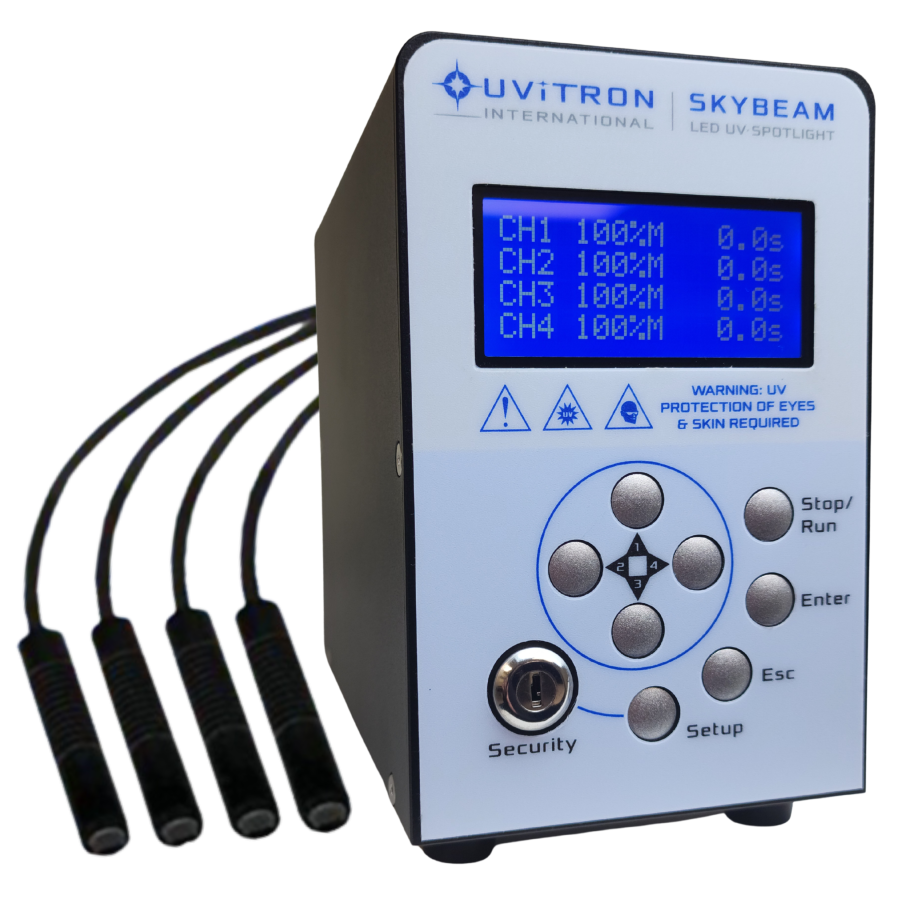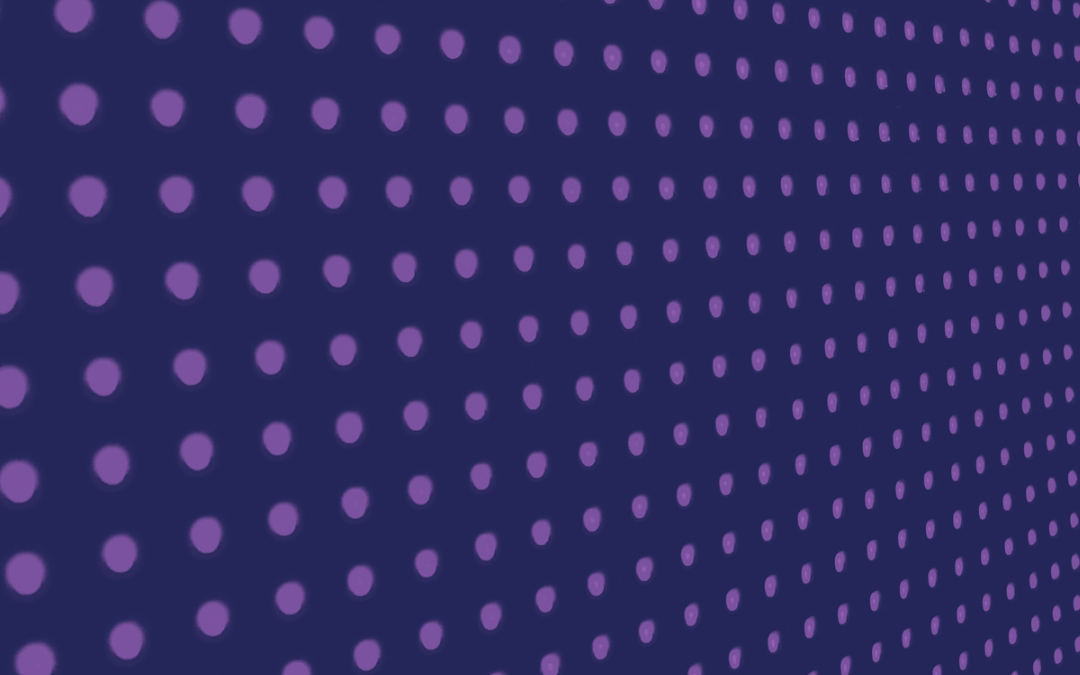UV-LED curing stands at the forefront of curing technology, utilizing ultraviolet light-emitting diodes (UV-LEDs) to activate a reaction in photosensitive materials, causing them to harden or ‘cure’. From the realms of inkjet printing to adhesive bonding, coating application, and beyond, this revolutionary process is finding its foothold in diverse industrial applications. Diverging from the traditional path, UV-LED curing replaces conventional mercury-based UV lamps with UV-LED lights, presenting a host of compelling benefits. This paradigm shift has not only introduced a more efficient, safe, and environmentally conscious solution to the industry but also has been instrumental in overcoming various operational challenges typically associated with traditional UV curing.
The Mechanics of UV-LED Curing
The core of UV-LED curing technology lies in its innovative use of ultraviolet light. The system uses specially designed LED lights that emit ultraviolet light at specific wavelengths. These wavelengths, typically in the UVA range (320-400nm), are carefully chosen to align with the absorption peak of the photoinitiators present in the photosensitive materials.
When these materials are exposed to UV light from the LEDs, the photoinitiators within them become excited, and a chemical reaction is triggered. This reaction prompts the polymers in the material to link together, forming a three-dimensional cross-linked network. The result is a rapid transformation from a liquid or semi-liquid state to a hardened or ‘cured’ state, without the need for additional solvents or drying time.
UV-LED Curing Vs. Conventional UV Curing
The adoption of UV-LED curing over traditional mercury-vapor UV lamps heralds a sea change in the industrial landscape. Notably, UV-LED curing mitigates several inherent challenges posed by mercury-based UV lamps. Firstly, UV-LED curing is significantly more energy-efficient than its predecessor. The technology requires less power to operate, reducing energy consumption, and consequently, operational costs. Secondly, UV-LED curing is safer for both operators and the environment. Traditional mercury UV lamps generate a significant amount of heat and emit potentially harmful UV-C and UV-B radiation. Conversely, UV-LED lights produce minimal heat and emit light only in the safer UVA range, thereby diminishing the risk to operators. Also, the absence of mercury in UV-LEDs eliminates the need for hazardous waste disposal. Finally, UV-LED curing contributes to a more sustainable industrial landscape. The longer life cycle of UV-LED lights, combined with their lower energy consumption, results in a smaller carbon footprint. Moreover, UV-LED curing facilitates cleaner processes, as it allows for solvent-free formulations, promoting a healthier working environment and less pollution.
The Benefits of UV-LED Curing
Superior Energy Efficiency
UV-LEDs operate with substantially lower energy consumption compared to traditional mercury UV lamps. This higher efficiency is primarily due to the instant on-off capability of UV-LEDs, reducing energy wastage during idle periods. Additionally, UV-LEDs emit light at the exact wavelengths required for curing, eliminating the need for energy-consuming filters required in traditional systems. The result is not only a significant reduction in power usage, but also lower utility bills, making UV-LED curing a cost-effective choice for industries.
Eco-Friendly Operation
UV-LED curing technology is a poster child for green industrial operations. Unlike mercury-based lamps, UV-LEDs do not contain any mercury, a harmful pollutant. Traditional lamps require careful disposal to prevent mercury from harming the environment. By contrast, the mercury-free nature of UV-LEDs means no special disposal procedures, reducing the environmental footprint of the curing process. Also, UV-LED curing often enables formulations without volatile organic compounds (VOCs), reducing air pollution and contributing to a cleaner, safer workplace.
Decreased Heat Output
One of the key advantages of UV-LED curing is its significantly lower operating temperature compared to conventional UV lamps. This reduced heat output offers several benefits. Firstly, it expands the range of materials that can be cured, including heat-sensitive substrates that may deform or discolour under traditional UV lamps. This opens up new possibilities for industries such as electronics and medical devices, where heat-sensitive components are commonplace. Secondly, the low heat output enhances worker safety by minimizing the risk of accidental burns during operation.
Longer Lifespan
A typical UV-LED light source is estimated to have an operational life of around 20,000 hours or more, a significant leap from the average 1,000 to 2,000 hours offered by conventional mercury UV lamps. The extensive lifespan of UV-LEDs comes from their fundamentally different method of generating UV light. Rather than relying on an excited mercury vapor, UV-LEDs use semiconductor materials to create light. These materials are much more durable and do not degrade over time to the same degree as the elements in a mercury UV lamp. This longevity directly leads to several operational advantages.
Instant On/Off
Traditional mercury lamps require a substantial amount of time to warm up and achieve the necessary intensity for effective curing. This limitation not only consumes time but also restricts operational flexibility. Conversely, UV-LEDs offer an immediate response. They reach their full intensity within microseconds, eliminating any wait time. This responsiveness is particularly advantageous in production environments that require frequent start-stop cycles, enabling instant curing whenever needed.
Greater Process Control
In a UV-LED system, operators can easily adjust the intensity of the emitted light. This is a significant advantage over traditional mercury lamps, which usually operate at a fixed intensity. The ability to modify light intensity grants operators the flexibility to fine-tune the curing process based on the specific requirements of the materials and applications at hand. For example, sensitive materials may require lower intensity to prevent damage, while other materials may necessitate higher intensity for a robust cure.
Uvitron International: Our UV-LED Curing Systems
SkyRay

Uvitron International’s SkyRay UV-LED curing system exemplifies the technological advancements driving the curing industry. Boasting a compact, integrated design, this high-performance device brings remarkable efficiency and control to the curing process. The SkyRay system elegantly integrates all necessary components into a small lamp head, rendering the need for remote controllers, power supply boxes, or remote coolers obsolete. Its ease of installation—simply mount the head, connect the AC power cord, and begin—makes it a versatile addition to any factory floor. This potent device illuminates a 5 x 5-inch curing area with cool, high-intensity light evenly distributed across the area, courtesy of long-life, solid-state LEDs. The system offers adjustable output intensity, accommodating the curing needs of different materials. SkyRay features a built-in exposure timer and an intuitive front panel LCD display, making programming and monitoring of curing operations straightforward. It ensures process integrity through password protection, preventing unauthorized changes to sensitive processes and control settings. A variable-speed cooling fan ensures optimal operating conditions, while the slim enclosure design, complete with flush-mounted carrying handles, allows for side-by-side mounting of multiple units. This makes it possible to cure larger areas simultaneously.
SkyBeam

The SkyBeam LED spotlight curing system is a high-intensity, cool-operation curing solution that has earned its reputation in both benchtop and automated production lines. Weighing a mere 3.25 lbs., this compact unit blends power with ease of use and is designed to handle demanding industrial environments. The SkyBeam system supports up to four independently operating light guides, each offering a 0–999.9 second exposure timer and a 10–100% power adjustment range. It includes a long-life light guide, with the flexibility to adjust the UV light spot size by replacing the optical lens at the end of each guide. This capability ensures tailored irradiation, enhancing the curing process for a variety of applications.
